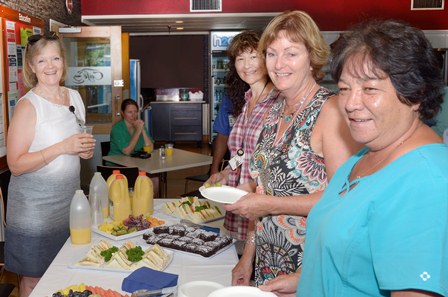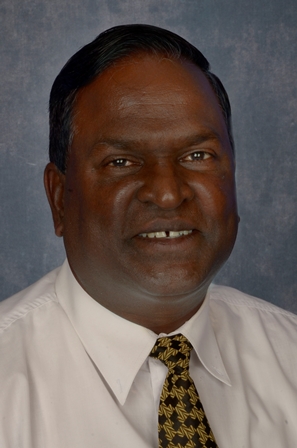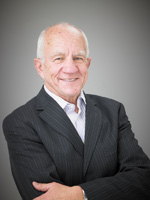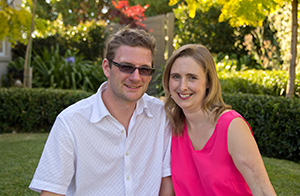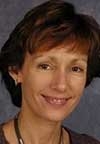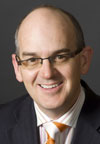Source:
New chaplain at Waikato Hospital
Source:
New chaplain at Waikato Hospital
Waikato Hospital’s newest hospital chaplain Daniel Sitaram has taken an interesting journey to end up here in the Waikato.
Daniel, who has now been working with the hospital chaplains for about one month, is of Fijian Indian heritage and w…as ordained as an Anglican priest in Fiji, working in many parishes there before becoming a high school teacher.
He worked in secondary schools in Fiji for eight years before moving to Christchurch with his wife. There, the Anglican Diocese of Christchurch awarded Daniel a scholarship to undertake a Bachelor of Theology at the University of Auckland.
“I think I bring a cultural mix to the Waikato Hospital chaplaincy team and may be able to help with patients and visitors who speak other languages because as well as English, I speak Fijian Indian, most of the Indian dialects, and can also communicate in Tongan and Samoan as well,” he said.
Auckland remained Daniel’s home for many years, and after he finished his degree in Theology, he completed one year of his Bachelor of Nursing at Manukau Institute of Technology, but then ended up joining the Pathology team and worked for five years as a lab technician with the Labtests.
It was his most recent job that brought him back to pastoral care however, when he began work as a chaplain at the Mission to Seafarers in Auckland.
Here he provided pastoral care to the crews of cruise ships and container ships etc. when they would return to the centre in Auckland between voyages.
“It was like a home to them when they came back to land,” says Daniel.
“The centre had a chapel, and we would provide counselling and general pastoral care for these staff.”
But, it was a slower pace of life that attracted Daniel, his wife, seven-year-old daughter and 16-month-old son to the Waikato and he says he has been given a warm welcome to Waikato Hospital.
“I look forward to working with these lovely people.”
Blog from the Chair
Source:
Blog from the Chair
Welcome to 2014. Best wishes to everyone for a great year and thank you to all those who worked hard through the holiday season to keep our services running.
As you are all aware our Chief Executive Craig Climo will be leaving us this year.
Under Craig’s leadership our organisation has made great progress, and at the same time completed what has been New Zealand’s largest building programme.
We now need to find a leader who can help us all to build on what has been achieved.
The recruitment of a Chief Executive is the most important decision any Board (of Directors) gets to make and we will do everything we can to make sure we get it right.
When choosing a new Chief Executive we need to understand the things that we do very well. But we also need to identify the opportunities that exist to be even better than we are.
To assist with that I have asked the Ministry of Health to organise a team of experienced DHB leaders to carry out of review of our core services. This will allow us to see where we stand through fresh eyes and clarify the task of the new Chief Executive.
I have asked for the review to be carried out as soon as possible but exact timing will depend on the availability of appropriate team members. The review should not disrupt your work in any way but if you are engaged by the review team please give them your full cooperation and provide any information they need.
Once we have appointed a recruitment company to work with we expect the process of identifying our new Chief Executive to take at least three months. The successful candidate will then need to organise their departure from their current employment so it is likely to be at least six months before they are in place here. In the meantime it is business as usual.
Thank you all for the great work you continue to do.
Bob Simcock
Chair
10 February 2014
Related posts
Midwifery and obstetric care provided during labour
Source:
Midwifery and obstetric care provided during labour
(12HDC00876, 17 December 2013)
Health and Disability Commissioner Anthony Hill today released a report finding a midwife in breach of the Code of Patient Rights for severe departures from the accepted standard of care.
The newly graduated midwife assessed a 31-year-old woman at a birthing centre at 4am, after the woman’s waters broke spontaneously at home and contractions started several hours earlier. It was known to the midwife that the baby was in the posterior position, the woman had experienced difficulties with the birth of her first son, and the woman was anxious and in pain.
Over the following ten and a half hours, the midwife did not adequately assess and monitor the woman and the fetal heart rate, support the woman, or document the care and treatment she provided. Following her assessment at 4am, the midwife administered pethidine to the woman and sent her home against her wishes and when it was not clinically appropriate to do so. When she reassessed the woman at home four hours later, she found the woman to be fully dilated and pushing involuntarily with her contractions. The midwife transferred the woman back to the birthing centre via ambulance. After an hour and a half of active pushing at the birthing centre with no progress, the midwife transferred the woman to the public hospital via ambulance at approximately 1pm.
Mr Hill found that the midwife did not consult a specialist and/or transfer the woman to secondary care in a timely manner, provide adequate handover information to the public hospital staff, or clarify who was responsible for the woman’s ongoing care when the woman was transferred to the public hospital.
The woman’s baby was born at the public hospital at 3pm that afternoon by emergency Caesarean section following a prolonged second stage of labour. Sadly, the baby could not be resuscitated and died shortly after birth. The woman suffered a spontaneous uterine rupture and required emergency surgery, including an abdominal hysterectomy.
In addition to referring the midwife to the Director of Proceedings to determine whether any proceedings should be taken, the Commissioner recommended that the midwife establish a three-year mentoring and continuing education plan with the Midwifery Council of New Zealand and the New Zealand College of Midwives. Mr Hill recommended that the midwife complete that plan before returning to work as a self-employed community-based midwife.
Mr Hill also found the hospital’s obstetric registrar in breach of the Code for failing to adequately assess the woman and for instigating an inappropriate treatment plan. Furthermore, Mr Hill concluded that the woman received poor midwifery care from the public hospital midwives, for which the DHB was found in breach of the Code.
http://www.hdc.org.nz/decisions–case-notes/commissioner’s-decisions/2014/12hdc00876
Barlow family response to HDC findings
Source:
Maternity care now a health priority
Source:
Maternity care now a health priority
Joint statement from Waikato DHB, the New Zealand College of Midwives (NZ COM) and the New Zealand Committee of Royal Australian and New Zealand College of Obstetricians and Gynaecologists (RANZCOG)
Three of the organisations whose members were involved in the care of Linda Barlow on Sunday 25 October 2009 say the circumstances surrounding the case are tragic and resulted from a failure in the system to provide safe maternity care for Mrs Barlow and her baby.
Waikato DHB, the New Zealand College of Midwives (NZCOM) and the New Zealand Committee of the Royal Australian and New Zealand College of Obstetricians and Gynaecologists (RANZCOG) say maternity care in New Zealand is generally of a high standard.
Dr Ian Page (RANZCOG), Karen Guilliland (NZCOM) and Corli Roodt (Waikato DHB) said the unfortunate events such as those experienced by Mrs Barlow and her family were rare.
The three made the comments today following the release of the Health and Disability Commissioner’s report into the care provided to Mrs Barlow during the labour and delivery of her son Adam.
“A review of the content and application of policies and procedures for all women receiving primary or secondary maternity care has helped to clarify standards and expectations for all health professionals working in maternity care,” said Ms Guilliland.
“A review of the national referral guidelines resulted in greater clarity in how transfers from primary to secondary care should be made,” she said.
“There have been improvements in the interpretation of cardiotocography (CTG) by health professionals, as evidenced by the presence of both colleges at a recent meeting on this topic in Melbourne and continuing joint educational activities throughout New Zealand,” said Dr Page.
Mrs Roodt, the Waikato DHB clinical midwife director, said a review of the training and education available to professionals working in maternity care had led to better understanding of the roles and responsibilities in maternity care.
“I’ve seen there are closer relationships between health professionals as a result.”
The three organisations also believe that continuing with multi-disciplinary forums will ensure better communication regarding the care of women and so make it safer.
Consumers of maternity care and health professionals working in this area are receiving the full support of Waikato DHB, NZCOM and RANZCOG.
Related releases
More information
Contact:
Mary Anne Gill
Communications Director
Waikato District Health Board
Ph: 07 834 3684
Mobile: 021 705 213
Waikato DHB accepts HDC findings
Source:
Waikato DHB accepts HDC findings
Waikato District Health Board (DHB) has today accepted the findings of the Health and Disability Commissioner, which found the DHB was in breach of the Code of Health and Disability Services Consumers Rights when it cared for Linda Barlow[i] on Sunday 25 October 2009.
Chief operating officer Jan Adams said she had already met with Mrs Barlow and her husband Robert on Thursday 23 January this year to apologise for Waikato DHB’s breach of the Code and for the inadequacies in the care provided by the DHB.
At that meeting she provided the Barlows with a written apology.
“We accept the findings of the Health and Disability Commissioner,” said Mrs Adams.
“In my meeting with Mr and Mrs Barlow, we all took the opportunity to reflect on what happened, what we could learn from it and how we can take those learnings so we can provide quality care for women and their families.”
The Health and Disability Commissioner found there were other breaches of the Code before Mrs Barlow’s arrival at Waikato Hospital.
“While I can’t comment on those I will say Waikato DHB recognises the importance of working in close partnership with all health professionals locally and regionally with the aim of providing the very best care to our patients,” said Mrs Adams.
Waikato DHB has already made a number of changes because of the issues identified in Mrs Barlow’s treatment including the standardised use of the Situation Background Assessment Recommendation Response (SBARR) communication tool and use of transfer of care processes.
As a result of HDC’s recommendations, Waikato DHB will also:
- carry out an audit of compliance with its new Transfer of Care policy, Admission Discharge and Transfer policy, Maternity Transfer of Care procedure, cardiotocography (CTG) credentialing process and Fetal Heart Monitoring Passport and undertake to provide the Health and Disability Commissioner with the outcome of those audits by 5 May 2014.
- focus on CTG interpretation education as per the fetal heart monitoring passport, which includes both face to face and online CTG education.
[i] The Health and Disability Commissioner released an anonymised report. Robert and Linda Barlow, named as Mrs A and Mr B have given permission for Waikato DHB to name them in any media releases made by Waikato DHB, the New Zealand College of Midwives and the New Zealand Committee of the Royal Australian and New Zealand College of Obstetricians.
Related releases
More information
Contact:
Mary Anne Gill
Communications Director
Waikato District Health Board
Ph: 07 834 3684
Mobile: 021 705 213
Toxic shellfish warning revised
Source:
Toxic shellfish warning revised
Regular shellfish monitoring along the coast has seen Paralytic Shellfish Poisoning (PSP) levels fall along the eastern Coromandel Peninsula.
“There is now no PSP concern from Waihi Beach northwards. However, the current warning remains in place from Waihi Beach to Whakatane Heads,” says Medical Officer of Health, Dr Jim Miller.
The Medical Officer of Health continues to advise against gathering or eating shellfish from Waihi Beach, along the Bay of Plenty coast to Whakatane Heads in the Eastern Bay of Plenty. The warning includes Tauranga Harbour, Maketu and Waihi estuaries, Matakana and Motiti Islands, and all other islands along this coastline.
The health warning applies to all bi-valve shellfish including mussels, pipi, tuatua, cockles, oysters, scallops as well as cat’s eyes, snails and kina (sea urchin). PSP is caused by natural toxins that are produced by algal blooms and accumulate in shellfish that feed on the algae. Shellfish containing toxic levels of paralytic shellfish poison don’t look or taste any different from shellfish that are safe to eat. Cooking or freezing the shellfish does not remove the toxin. Paua, crayfish and crabs can still be taken but as always, the gut should be removed before cooking or eating.
Eating shellfish affected by paralytic shellfish toxin can cause numbness and tingling around the mouth, face, hands and feet; difficulty swallowing or breathing; dizziness; double vision; and in severe cases, paralysis and respiratory failure. These symptoms can start as soon as 1-2 hours after eating toxic shellfish and usually within 12 hours. Anyone suffering illness after eating shellfish should seek urgent medical attention.
“Paralytic shellfish poisoning can be a very serious illness. Please help keep yourself and your family safe and don’t collect or eat shellfish from the affected areas,” says Dr Miller.
Monitoring of toxin levels will continue along the coast and any changes in advice will be communicated accordingly. The public can obtain up-to-date information on the toxic shellfish health warning through these channels:
- Phone: 0800 221 555, option 1
- Website: www.ttophs.govt.nz/health_warnings
- Twitter: http://www.twitter.com/ttophs
- Email alerts for subscribers: www.ttophs.govt.nz/alert
ENDS
For more information please contact:
Debbie Phillips, Communications Officer on (07) 577 3793 or 021 791 814.
Voluntary Bonding Scheme Registration open
Source:
Voluntary Bonding Scheme Registration open
Registrations of interest for the 2014 Voluntary Bonding Scheme have formally opened today announced Health Minister Tony Ryall.
“The Voluntary Bonding Scheme gives communities and specialties that face difficulties recruiting and retaining health professionals the chance to gain some of our best and brightest graduates. It also allows these new graduates to apply their training in new environments,” says Mr Ryall.
This year additional hard-to-staff communities and specialties have been introduced for doctors, nurses and midwives.
“For doctors, the 2014 intake includes a revised list of hard-to-staff communities for GP trainees, and new specialty areas like emergency medicine and obstetrics and gynaecology,” says Mr Ryall.
“For nurses, the West Coast and South Canterbury are included as hard-to-staff communities, with the addition of primary healthcare as a hard-to-staff specialty.
“For midwives, additional hard-to-staff communities include Capital and Coast DHB, Tairawhiti DHB and specific communities within the Waikato and Canterbury regions,” says Mr Ryall.
The scheme works by encouraging doctors, nurses and midwives to start their careers in hard-to-staff communities and specialties by offering payments to their student loans after a three to five year bonded period.
Radiation Therapists and Medical Physicists simply have to work in New Zealand for three to five years upon completion of their qualifications. Those without a student loan are also eligible for the scheme.
“There are currently 2688 participants on the scheme, and these health professionals are making a significant contribution to their areas,” says Mr Ryall.
“The government recognises the importance of improving access to health services in vulnerable communities and isolated areas. The success of the scheme so far has proven that health professionals are going where they are needed most,” says Mr Ryall.
Registrations of interest for this year’s intake are open for new GP trainees, graduate doctors, nurses, midwives, radiation therapists and medicalphysicists until 5pm on Friday 14 March.
More information and a full list of registration forms are available at:http://www.healthworkforce.govt.nz/our-work/voluntary-bonding-scheme
Media contact: Bill de la Mare 021 924 331
Next round of maternity meetings is here
Source:
Next round of maternity meetings is here
The final round of consultation meetings around maternity services in Te Awamutu and Morrinsville, which started in December, gets underway in Te Aroha tomorrow night with the last two meetings in Te Awamutu and Morrinsville next week.
“What we are hearing from the communities so far is that they are worried about the cost and time of travelling to Hamilton for birthing, and that they would rather their local birthing facilities be given a facelift than the services being centralised,” said Waikato DHB Planning and Funding general manager Brett Paradine.
“To date, more than 60 surveys have been filled out and we expect that number to increase after the next round of meetings is held.”
Mr Paradine said Waikato DHB also hopes to hear how the Te Awamutu and Morrinsville communities would best be served with antenatal services in their local communities, should the current services be consolidated in Hamilton.
Birthing facilities in Hamilton comprise two primary birthing units (River Ridge East and Waterford) for women with uncomplicated pregnancies, labour and antenatal needs, as well as a secondary birthing service at Waikato Hospital for more complex cases (i.e. requiring specialised medication, inductions, caesarean sections, twin births, early onset of labour, etc.).
“These ideas could include things like local access to pregnancy and parenting education or lactation support services which at present, are lacking in some areas.
“The board is keen to hear other suggestions from the community as well, such as improvements to existing community-based services or options like grouping some providers together into a family/resource centre – among other ideas.”
In December, Waikato District Health Board approved a 10-week public consultation period about the future of primary birthing facilities Matariki (Te Awamutu) and Rhoda Read (Morrinsville), after a New Zealand Institute of Community Health Care study recommended that the services be consolidated in Hamilton.
Waikato DHB requested the study after a steady increase in the number of women choosing to have their babies in Hamilton rather than in their own community.
The last two rounds of public meetings held in December and January in Te Awamutu, Morrinsville and Te Aroha were well attended by interested parties.
To read the feasibility study, fill in a survey or to read more information about the review, visit www.waikatodhb.health.nz/birthing
Upcoming meeting dates
Te Aroha
- Date: Tuesday 4 February
- Time: 7.15-8.45pm
- Venue: The Auditorium
Future Te Aroha Building
13 Boundary St
Te Awamutu
- Date: Monday 10 February
- Time: 6.30-8pm
- Venue: Baptist Church Hall, 106 Teasdale St
Morrinsville
- Date: Tuesday 11 February
- Time: 7.15-8.45pm
- Venue: Events Centre, Ron Ladd Pl
ENDS
Background information
Why was a feasibility study about these two primary birthing facilities carried out in the first place?
In the year from 1 July 2012 to 30 June 2013, 82 per cent of birthing women from Morrinsville/Te Aroha, and 86 per cent of birthing women in Te Awamutu, preferred to birth in Hamilton, rather than in their local birthing units.
Just 70 women birthed at Rhoda Read for the same period – on average one every 5.37 days – and 68 at Matariki – one every 5.21 days. Both Rhoda Read and Matariki are staffed 365 days a year, 24/7.
“While there seem to be plenty of ‘anecdotal’ reasons for this, one of the purposes of the feasibility study was to find out from the women themselves, and their midwives, why this is so,” said Mr Paradine.
The review team, headed by Dr Chris Hendry, a midwife with more than 30 years’ experience, undertook a detailed review of factors impacting on the reduced use of these facilities by local women, and recommended that birthing and labour services for Morrinsville/Te Aroha and Te Awamutu women, be consolidated in Hamilton.
Dr Hendry is a champion for rural services and primary birthing, having managed a Canterbury primary birthing unit in the past.
When she and the review team carried out the study, they met with staff and the midwives who work in or with Matariki and Rhoda Read.
“Women in the localities who had their babies in Hamilton also filled in questionnaires to determine the reasons why women chose not to birth in their local unit,” said Mr Paradine.
“Responses from those women indicated that they themselves had chosen to birth in Hamilton, but felt that there needed to be a maternity unit in the town for those who wanted to birth locally,” said Dr Hendry.
“But the facts are that only 14-19 per cent of eligible women in the 2012-2013 year did that. Which says to me that these towns do not have the local maternity services that the majority of birthing women want or need, and that’s what we need to ask them – that’s where the improvements will come from.
“The facilities are not servicing the towns well and if only such a small percentage are using these considerable resources, that’s not a fair distribution of maternity resources for the rest of the community.”
ENDS
